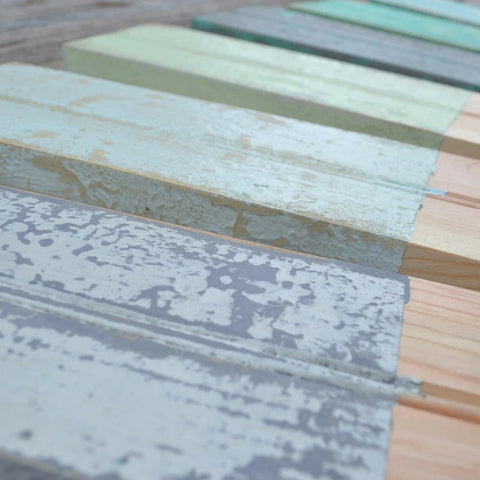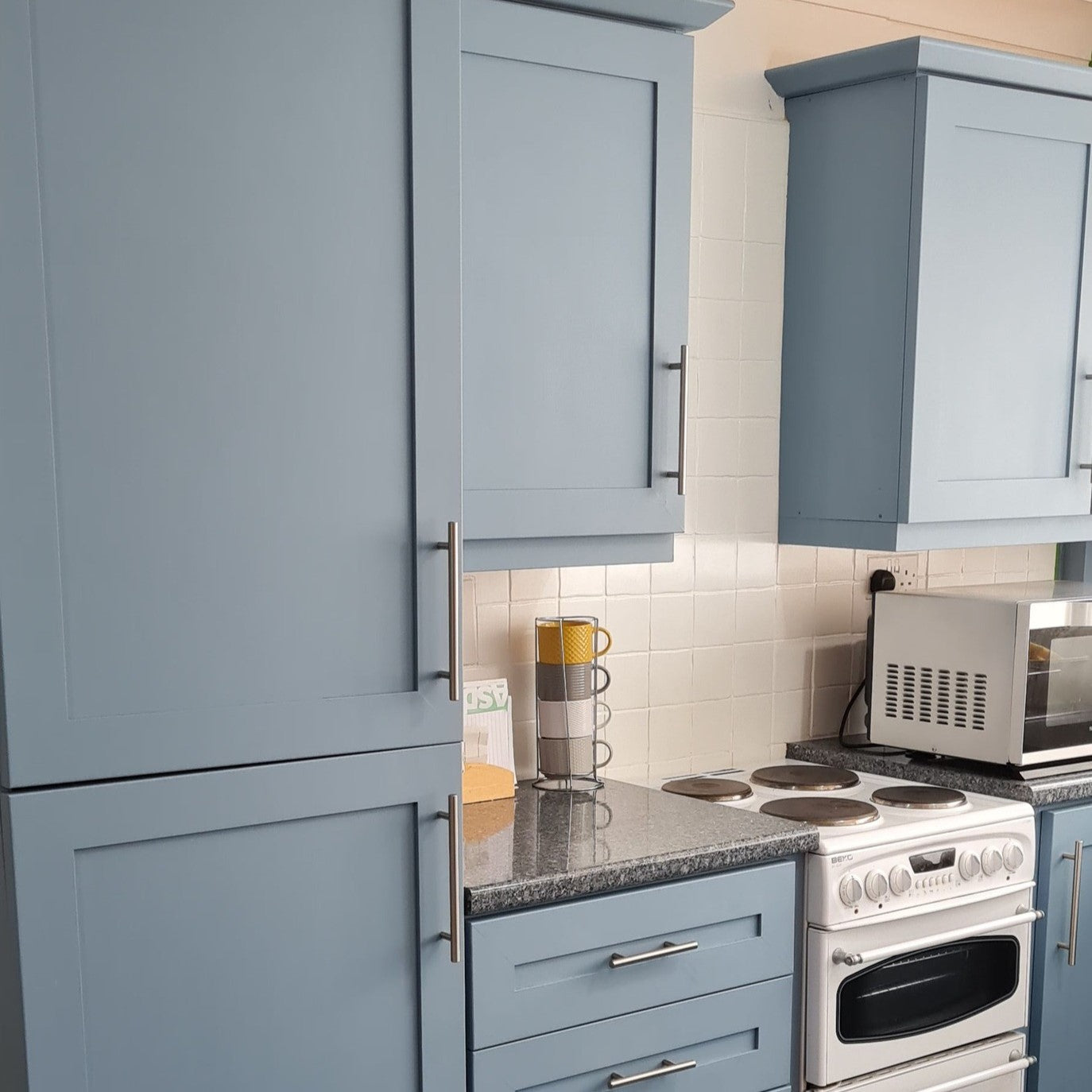Worn furniture - Do you like patina and old?
Saltwash is a new powder that can be mixed with paint, with which you create a wonderful textured patina surface together with paint. Furniture painting style preferred by professionals and home painters: the consumption of the paint surface in interior painting is popular and Frenchic paints are perfect for this technique.
With Saltwash, you can make a patina and old surface even on new furniture.
You can work with Saltwash mass with a brush, spatula, comb or palette knife.
Saltwash is also suitable for the texture of paintings when used directly on the canvas.
With this technique, you can get an elegant aged or bohemian worn surface on any piece of furniture or surface - easily. You just choose the furniture where you start!
Make the mass thick or thin - test and experiment!
You can creatively use this technique too - either sparingly or heavily consuming. Whether your furniture is a flea market find from the 30s or a standard Ikea piece of furniture, you can completely transform it by using high-quality chalk paint intended for furniture painting and various painting techniques.
The wearing technique is the easiest to implement for decorative furniture, it emphasizes the decorations and the shapes of the furniture wonderfully. But also try using it on rectangular pieces of furniture, the edges of drawers, the edge of the table top, etc.
You need at least these:
- Grinding tools
- Waxes
- Saltwash
- Brush
- (Spread or comb)
At its simplest, wear can be done by slightly sanding the edges of the furniture and decorations - try it!
Next, you can wax the wear of your sanding with brown wax, which further adds to the patinated, old look.

Saltwash
Saltwash is a powder that is mixed with paint to make a thick paste that gives the surface a wonderful patinated look! In this technique, the picture-like effect comes with two different shades of paint.
Start like this
Steps in brief:
Add the Saltwash paint paste, paint the top shade over the dried paint paste using the new shade and finally sand the layers and paste to reveal them. Simple and easy.
MIX SALTWASH AND PAINT

First pour the paint into the mixing bowl, then gradually add the Saltwash powder.
The mixing ratio is about 1:1, depending on how thick you want the mass to be and which tool you want to work with. Test it.

Mix a small amount first and try it out.
Mix the Saltwash powder into the paint, a good consistency is a thick, non-draining mass.
Brush, tap or lift the mass on the surface of the furniture, so that all the 'peaks' and 'spikes' of the mass remain visible. Finally, lightly 'smooth' the peaks with a brush, in long strokes.


Paint over with your desired shade and let dry.
GRINDING
Now comes the fun part, sanding the Saltwash layers. It's time to reveal all of your amazing layers of Saltwash powder. We recommend an electric sander, especially for larger pieces of furniture and shelves, for large surfaces, but sanding by hand is also sufficient, especially for smaller areas and edges. Typically 100-120 grit sandpaper works best to expose just the right amount of Saltwash® primer.

A very important tip is the grinding step.
Sanding is the "ta-da" moment when all the wonderful layers of Saltwash® are revealed, so this is a really important step. If you really want to create an authentic look, you'll want to think about "how this piece or surface will naturally wear over time" and maybe give that area a little more attention by sanding.
For example, you can imagine that the front edge of the top of the chest of drawers will wear more over time as hands or objects rub against it and wear it down. You could imagine the same around doorknobs, drawer pulls or the corners of a piece, where it would get a lot of natural wear and tear from being pulled and possibly bumped into over the years.
FINISHING WITH WAXES
After you've sanded the layers of Saltwash and if you want to create an aged patina that's a little more authentic, try applying colored wax to the piece. Simply wipe the wax over the surface of the piece to allow the dark wax to settle between the layers of Saltwash® powder. Wipe off excess wax with a clean, soft cloth.

Start planning and order the English-language Saltwash magazine , where you can get more technical tips and ideas for more Saltwash projects!









